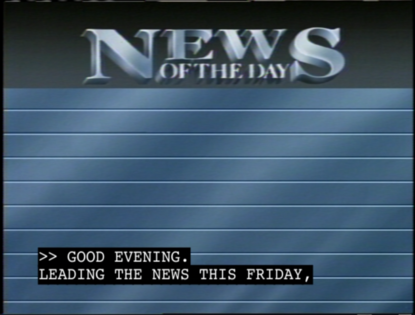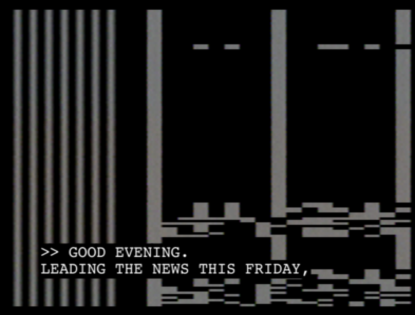A script that interprets the results of FFmpeg's readeia608 filter to create scc (and optionally srt) outputs from standard definition video files which contain EIA-608 data.
ffmpeg 4.3 or later
To use sccyou, simply download the script from the repo, make it executable (chmod 755 sccyou), and run one of the following commands:
./sccyou -h display the help menu
./sccyou INPUT_FILE create an scc output
./sccyou -s INPUT_FILE create both scc and srt outputs
./sccyou -y INPUT_FILE overwrite any existing outputs
The results of sccyou will vary based upon your specific command, but will look like sidecar INPUT_FILE.scc and INPUT_FILE.srt files.
After creating your sidecar files, sccyou will provide instructions for two forms of playback with captions (using ffplay).
Standard playback, with the captioned text on screen:
ffplay "INPUT_FILE" -vf subtitles="INPUT_FILE.scc"
Zoomed-in playback of caption data, scrolling vertically, with the captioned text appearing on screen:
ffplay "INPUT_FILE" -vf format=rgb24,crop=iw:1:0:1,scale=iw:4:flags=neighbor,tile=layout=1x120:overlap=119:init_padding=119,setdar=4/3,subtitles="INPUT_FILE.scc"
Adobe's Introduction to Closed Captions offers a good technical introduction to the various closed captioning formats that are out there. Please note: this script will only work with video files that contain EIA-608 (also known as CEA-608 or "line 21") captions, which were used exclusively in NTSC television broadcasts.
More information about the scc format (hexadecimal character codes and sets) can be found here.
We welcome any feedback, in the Issues section of this repo, though keep in mind that EIA-608 captions were often improperly created/duplicated, and ffmpeg can only retrieve that which isn't total trash.
Dave Rice
Paul Mahol
Development of sccyou was provided by New York Public Library's 2018/19 Innovation Project, and supported in part by the Charles H. Revson Foundation.
You can read our contributor code of conduct here.
sccyou is licensed under The MIT License.

